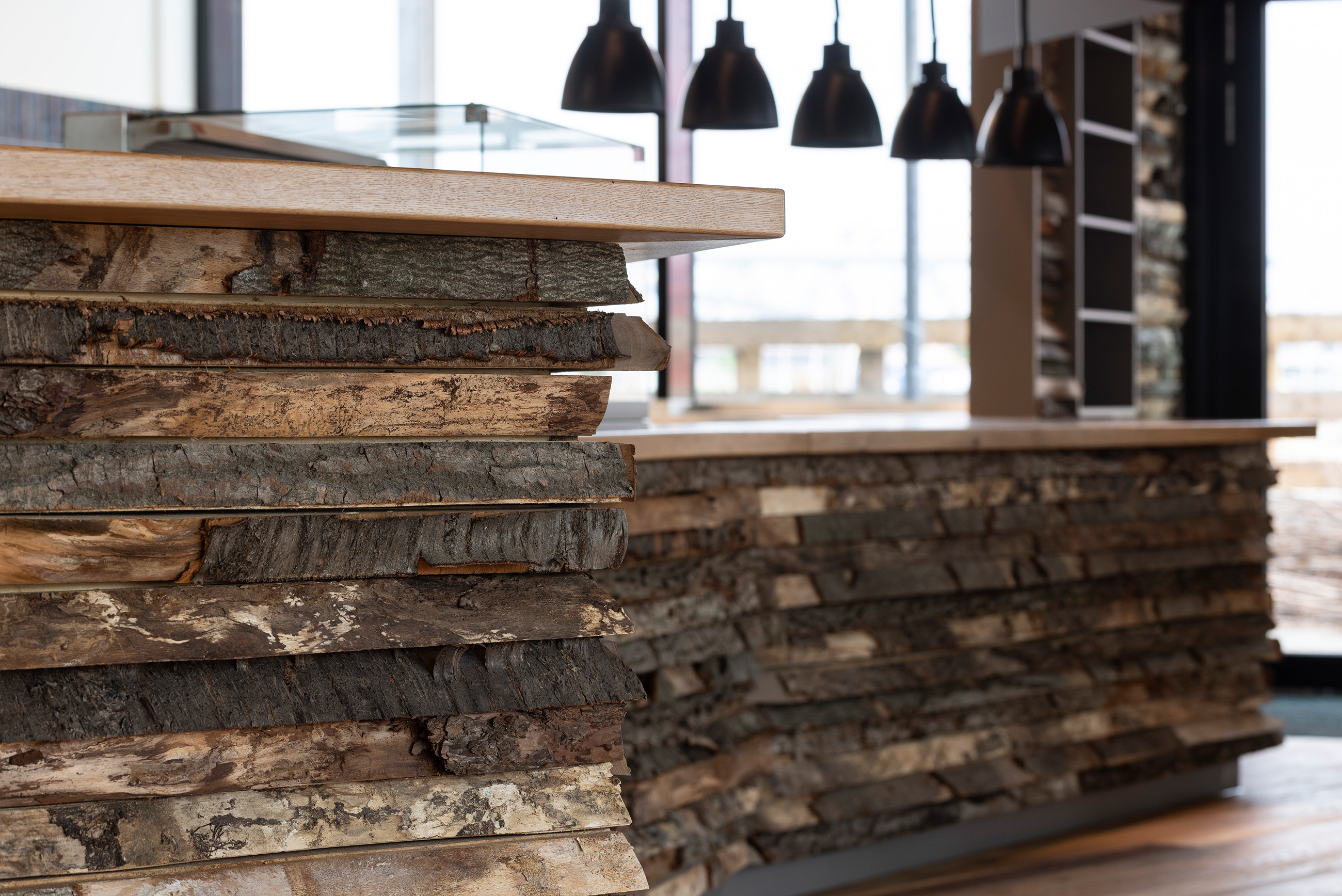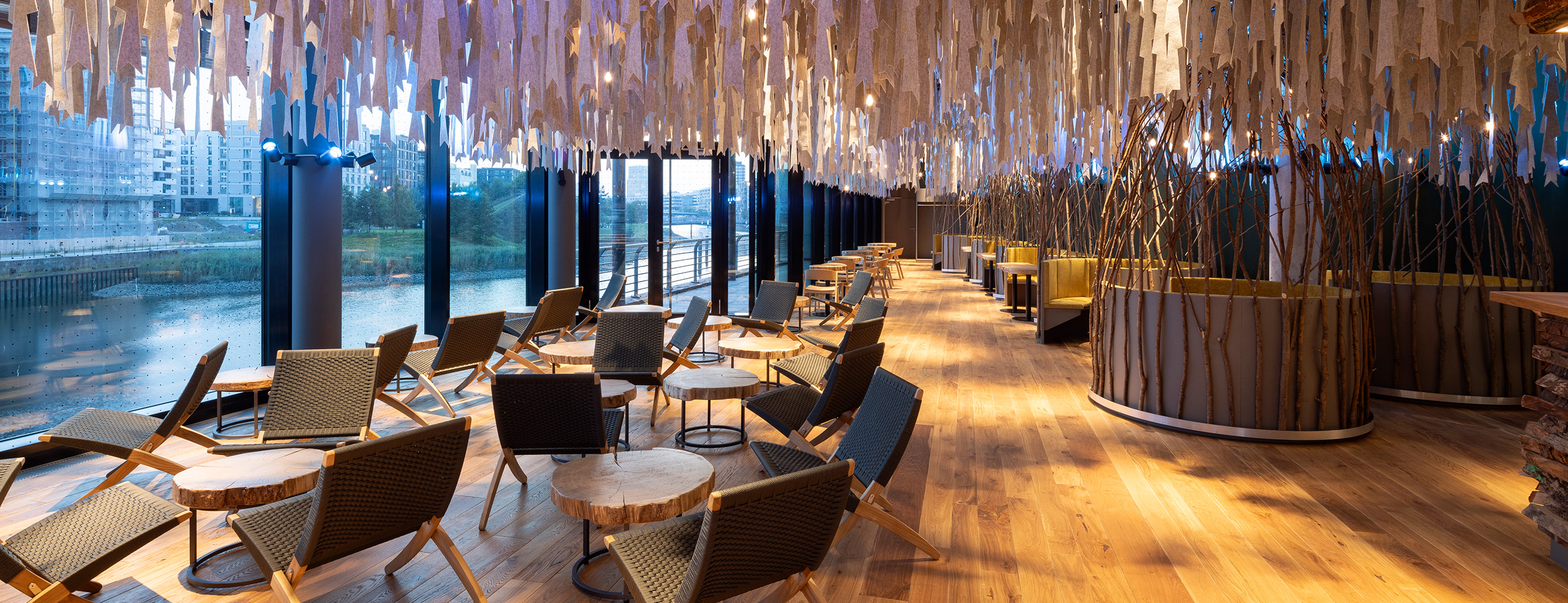

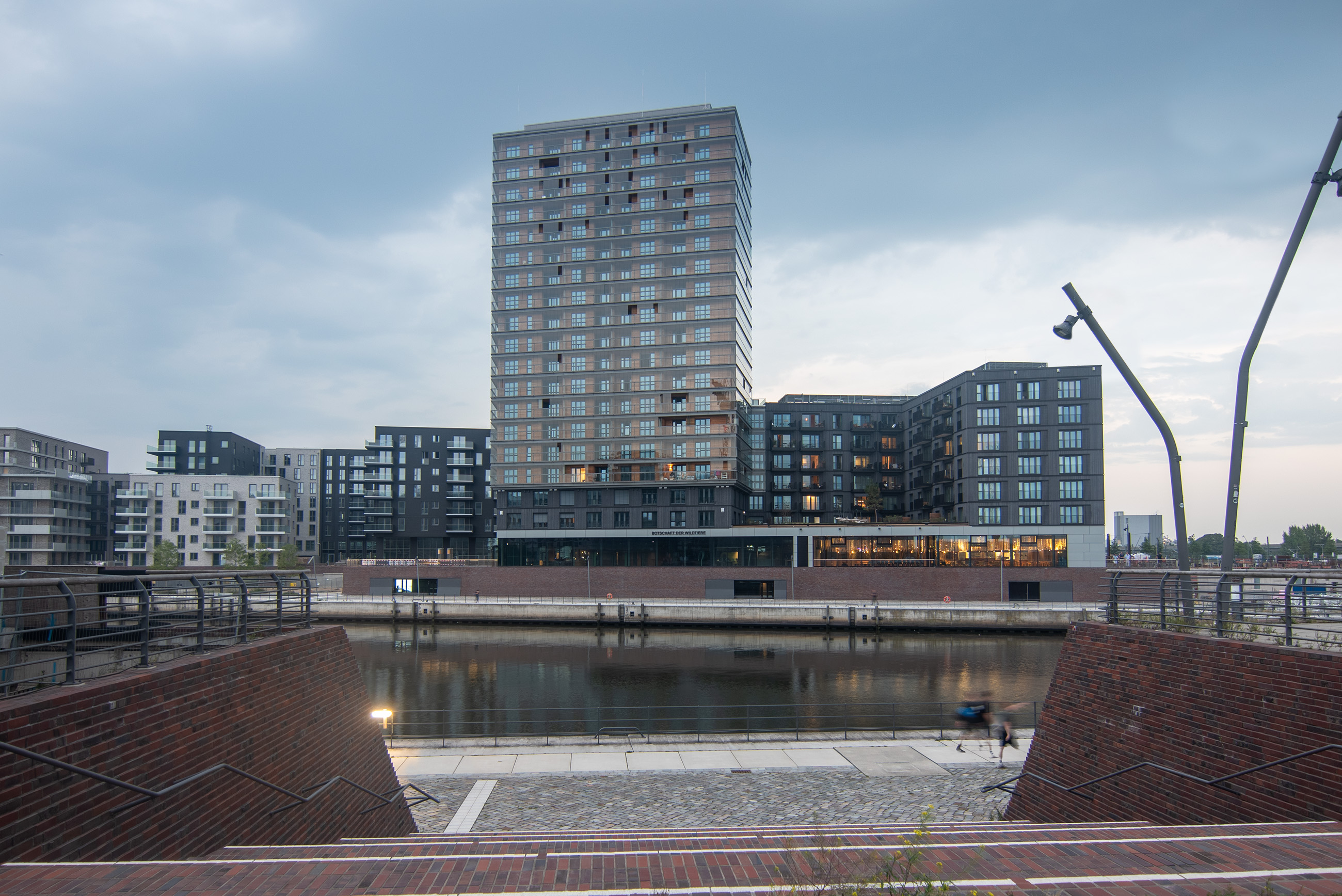
Located in one of Hamburg’s docks, Baakenhafen, very near to our offices and right in the centre of the city, is ROOTS, the tallest wooden skyscraper in Germany. This is where the Deutsche Wildtier Stiftung (the German Wild Animal Foundation) has had its headquarters since 2024. And it is here that they introduce visitors, young and old, to the world of wild animals.
The Foundation’s permanent interactive exhibition showcases the different inhabitants of the natural world, and describes the opportunities associated with, and challenges presented by, our coexistence with them. A cinema, which screens nature films, not only provides information for visitors in this way, but also promotes enthusiasm in its audiences for the exciting world of wild animals.
The restaurant we have designed for the Foundation, immerses visitors further in the story of animals and the natural world. On entering the large restaurant space, one is immediately drawn to the springy wooden floor on which one is walking, and then one’s gaze is caught by the jagged strips of felt hanging from the ceiling. Not only do they function as acoustic elements, but they transform the space into an abstract forest. The felt branches form vault-like areas of varying lengths, below which numerous areas of seating are located – as well as smaller zones of seating with individual tables for small groups of visitors, an area with long tables for larger groups, and more relaxed spaces with reclining seating. In the evening, small points of light like glowworms illuminate the felt forest we have created.
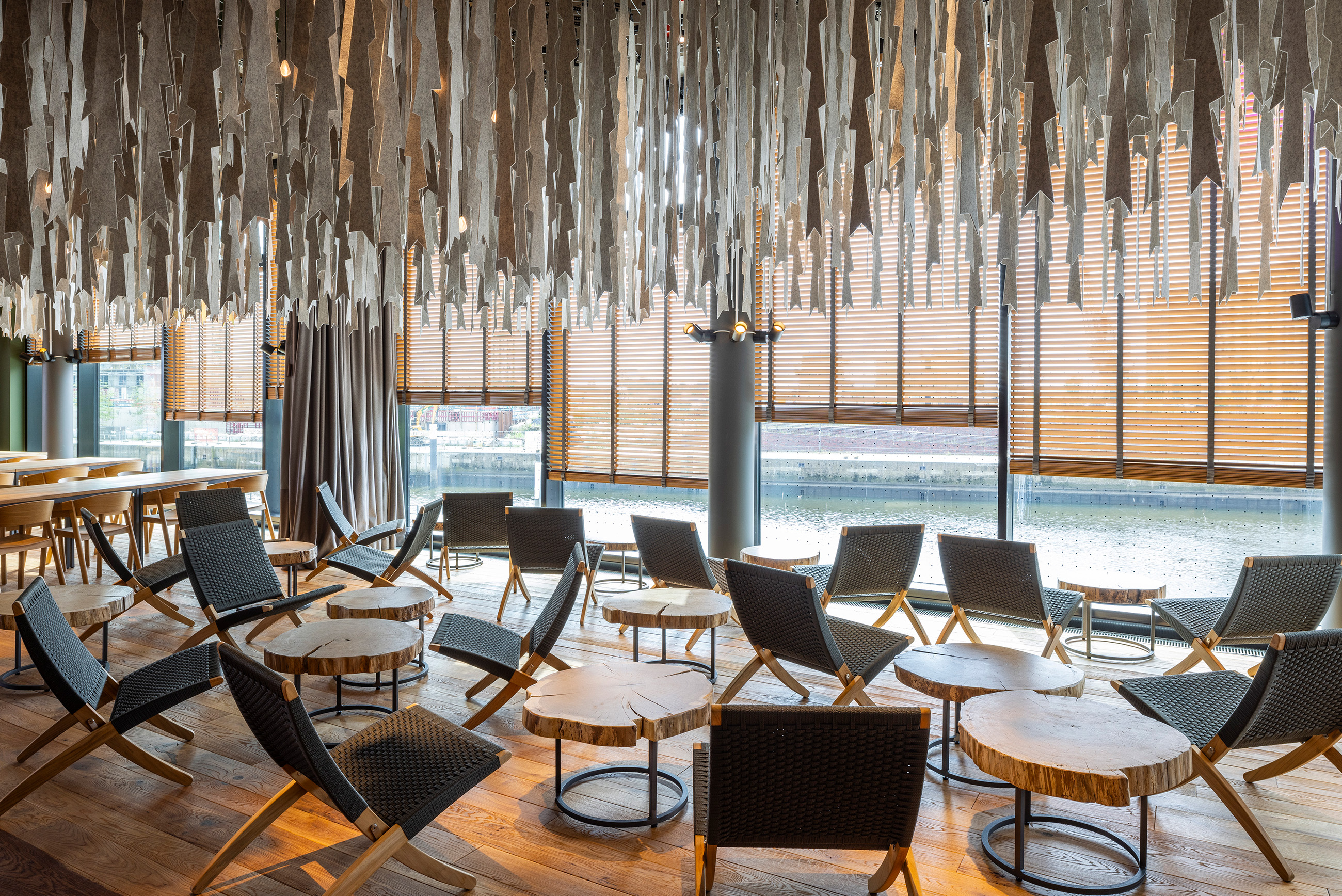
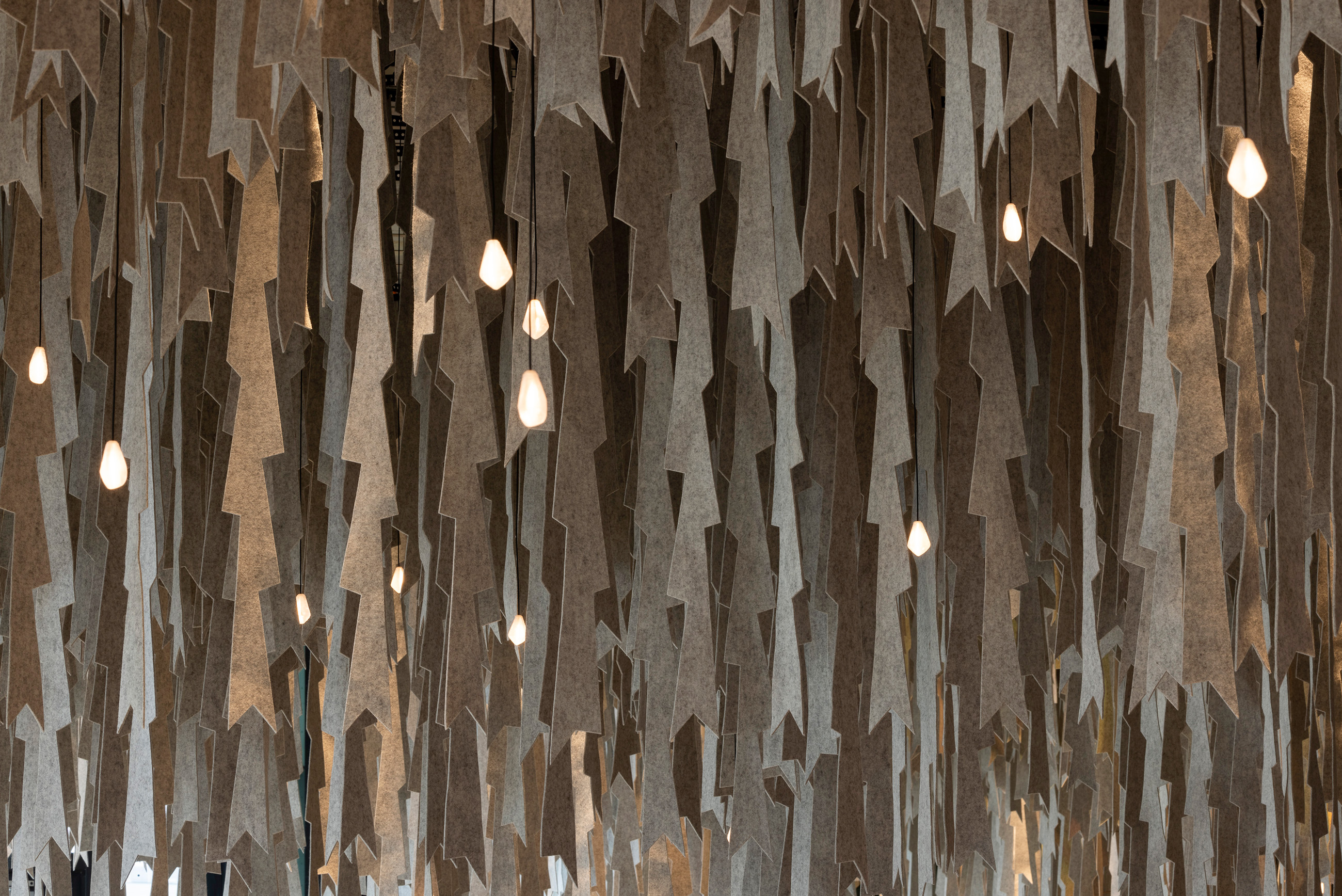
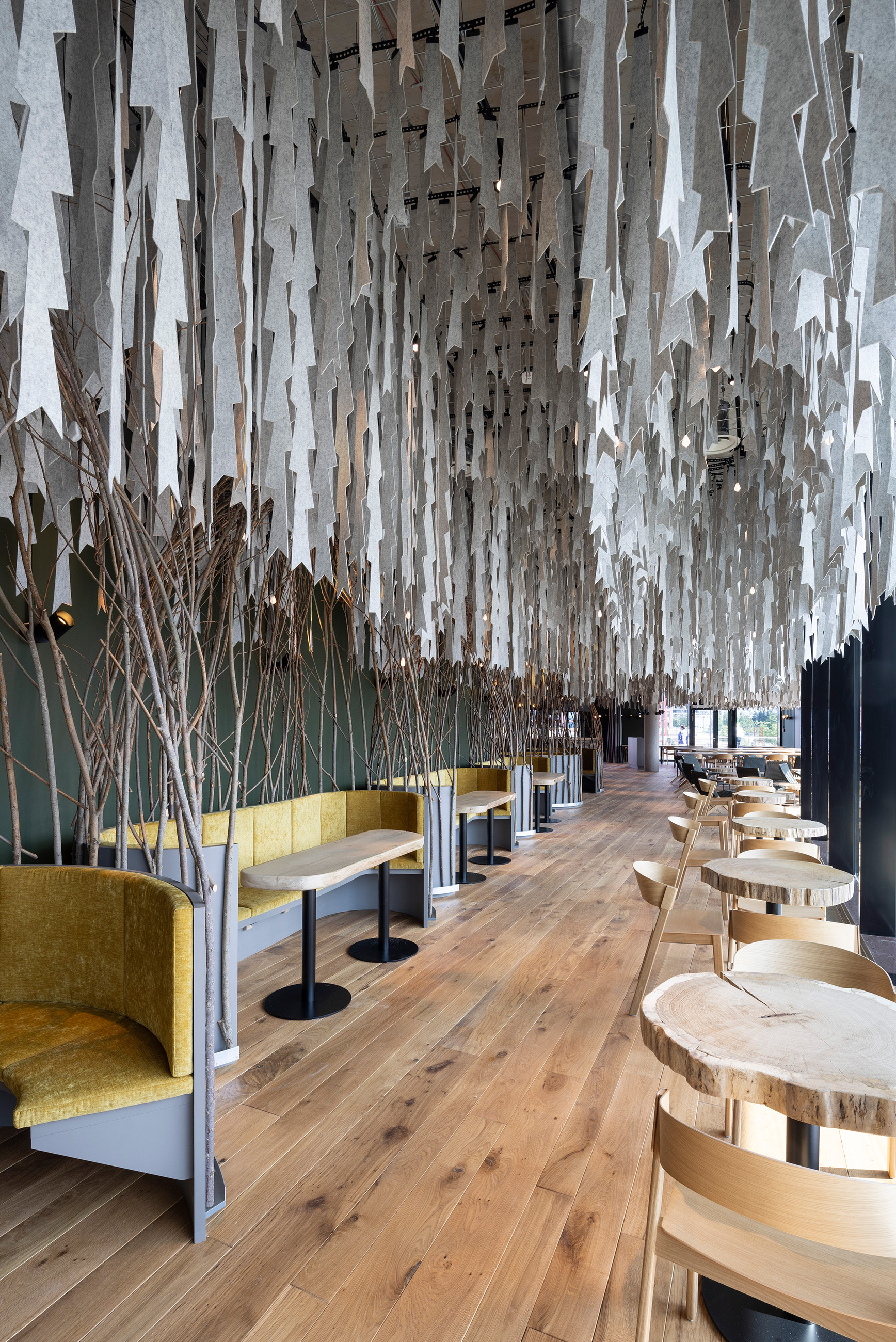

If you want to get a sense of what it is like to live in a squirrel’s drey, you can choose to sit in one of the pergola-like covered spaces. These are cosy niches enclosed by intertwined willow branches, for the construction of which we echoed the way squirrels or birds build their homes. Seated in one of these niches, guests are partially hidden, but can also enjoy watching what is going on in the larger restaurant area, whilst the open space of the restaurant offers visitors more contact with other customers as well as an impressive view out over the Baakenhafen.
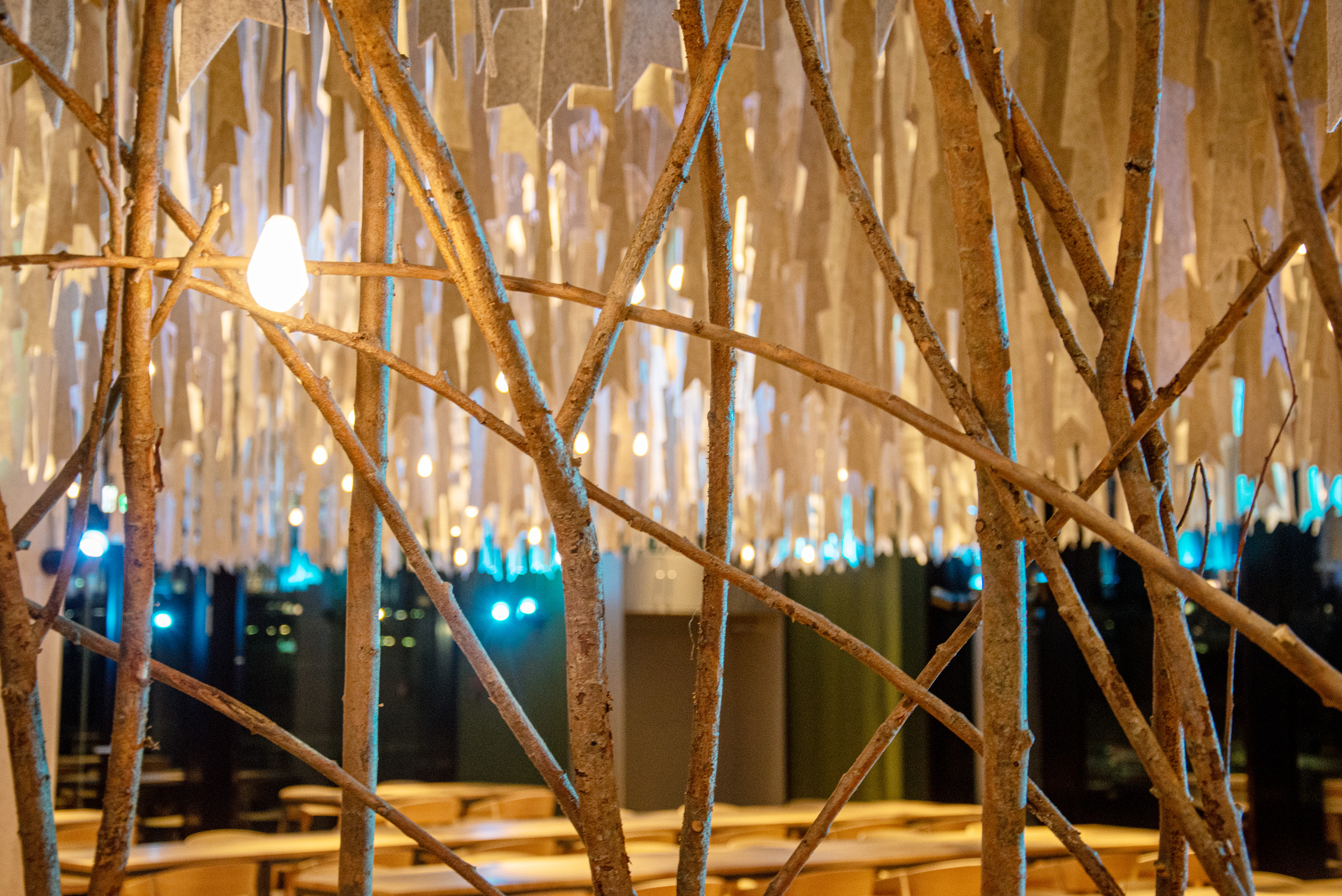
It is really important for us that our internal fittings not only look natural, but are designed to be truly sustainable. The greatest impact in this respect comes from the materials used. Instead of employing cement screed, we installed a plank floor on a wooden substructure, which saved 40 tonnes of CO₂ compared to the cement version.
This result was improved by the use of deadwood, that is, wood harvested from trees that fall during storms. Some deadwood is always left to rot on the forest floor to contribute to the natural habitat, but the surplus is removed and can be used for construction for projects where wormholes can be tolerated. As the CO₂ stored in the wood is preserved when it is installed as it is (instead of escaping when rotting), CO₂ savings are particularly high.

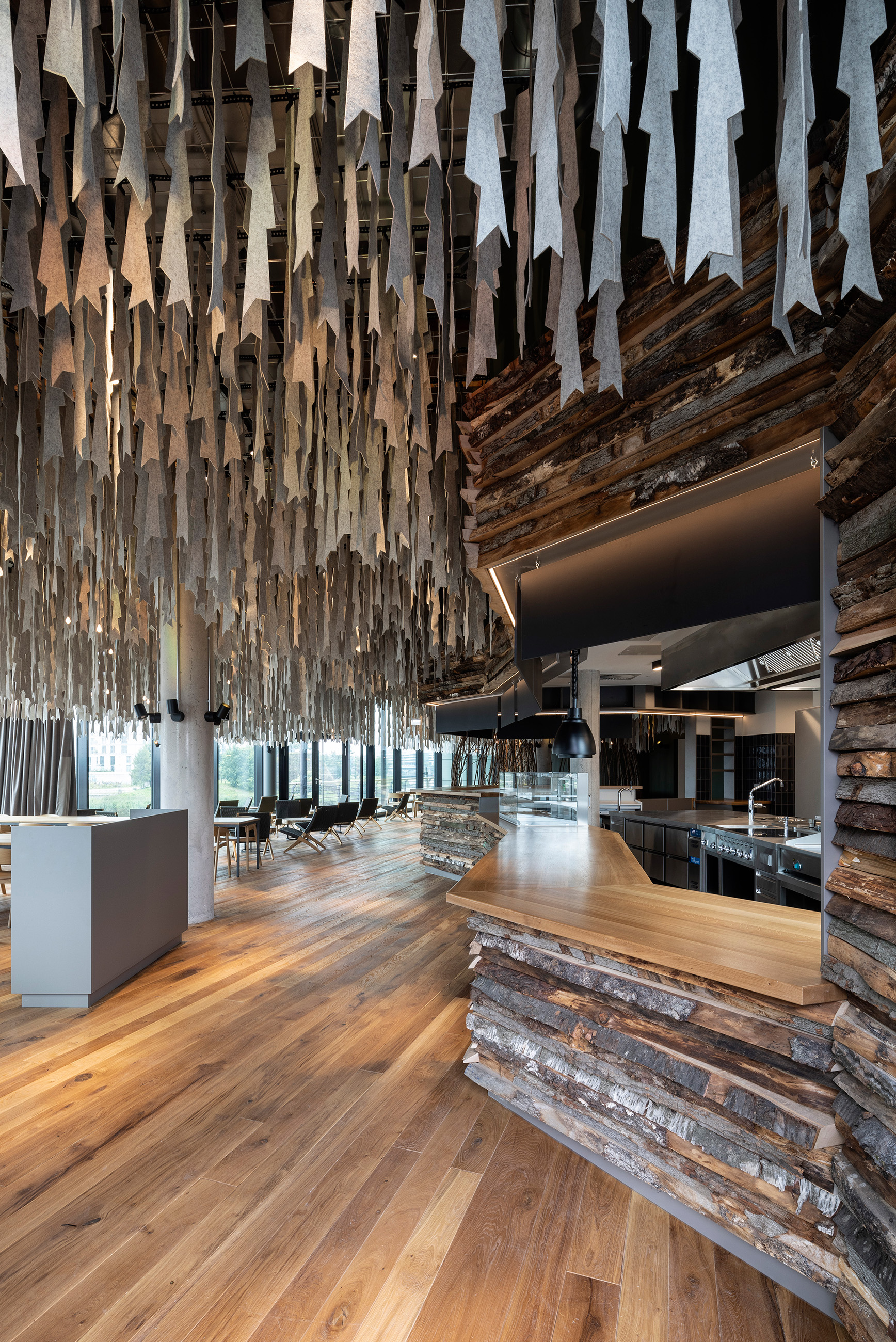
We employed an unusual natural material when constructing the counter: wood slabs are the outer sections discarded when harvested tree trunks are cut up; they are normally used for firewood. As these parts of the trunk still echo the appearance of the original tree – and have an irregular, rounded shape, and sometimes still have bark clinging to them – they lend the counter a sense of a wild screen, as in nature, just as we imagined it in early stages of our design process.
What is particularly special about this wood, is that it was sourced directly from the forest at Gut Klepelshagen, where the Deutsche Wildtier Stiftung is based. This was also the case for the willow rods that we used to enclose our seating niches. They were harvested during the annual pollarding of the willows at Gut Klepelshagen.
Using material like this is a way for us to build more smartly and sustainably. We try to use natural materials that are not only recyclable and can break down naturally, but have not been particularly valued to date and have generally been treated as waste or rubbish.
